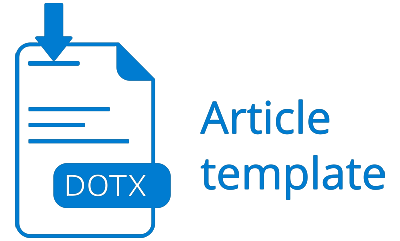The Role of Modernization of Information Technology in Forming the Character of the Young Hindu Generation
Abstract
The development and improvement of the quality of human resources needs to be improved to keep pace with the flow of information technology modernization in the era of globalization. The phenomenon of behavior and personality tendencies of today's young generation is increasingly moving away from religious values, customs, and culture, and losing their identity as individuals which is rooted in the noble values of the nation's religion and culture. This research aims to determine the role of character education and self-leadership in forming the character of the young Hindu generation. The population in this study was the Hindu Easy Generation with a total research sample of 96 respondents. The sampling technique is probability sampling with a stratified random sampling method with proportional allocation to collect quantitative data. The research results show that character education has a positive and significant effect on the character formation of young Hindus. In the context of the formation of the character of young Hindus, self-leadership has a positive and significant effect. Thus, self-leadership plays an important role in forming the character of young Hindus who are strong and responsible while the modernization of information technology can have a positive, but not significant, effect on the formation of the character of young Hindus.
References
Abdillah, W., & Jogiyanto. (2015). Partial Least Square (Pls) Alternatif Structural Equation Modeling (Sem) Dalam Penelitian Bisnis (Ed. 1). Andi.
Chin, W. . (1995). Partial Least Squareis To Lisrel As Principal Component Analysis Is To Cammon Factor Analysis. Technology Studies, 2, 315–319.
Cohen, J. (1988). Statistical Power Analysis For The Behavioral Sciences (2nd Ed.). L. Erlbaum Associates.
Fornell, C., & Larcker, D. F. (1981). Evaluating Structural Equation Models With Unobservable Variables And Measurement Error. Journal Of Marketing Research, 18, 39–50.
Ghozali, I. (2011). Structural Equation Modelling Metode Alternatif Dengan Partial Least Square Edisi 3. Badan Penerbit Universitas Diponegoro.
Ghozali, Imam. (2006). Aplikasi Analisis Multivariate Dengan Program Spss (Cetakan Ke). Badan Penerbit Universitas Diponegoro.
Ghozali, Imam. (2014). Structural Equation Modeling – Metode Alternatif Dengan Partial Least Squares (Pls). Universitas Diponegoro.
Gopal, Salisbury Et Al, 2002. (1997). Advancing The Theory Of Adaptive Structuration: The Development Of A Scale To Measure Faithfulness Of Appropriation. Information System Research, 8(4), 342–367.
Gravetter, & Wallnau. (2007). Statistics For The Behavioral Sciences. Thomson Wadsworth.
Nunnally, Bernstein, I. . (1994). Psychometric Theory (Ed. 3). McGraw Hill.
S.Schindler, D. R. C. & P. (2006). No Titlebussines Research Methods (9th Edition). McGraw-Hill International Edition.
Solimun. (2002). Structural Equation Modelling (Sem) Lisreldan Amos. Fmipa Universitas Brawijaya.
Sugiono. (2004). Konsep, Identifikasi, Alat Analisis Dan Masalah Penggunaan Variabel Moderator. Jurnal Studi Manajemen & Organisasi, 1(2), 61.
Sugiyono. (2016). Metode Penelitian Kuantitatif, Kualitatif Dan R&D. Pt Alfabet.
Yamin, S., & Kurniawan, H. (2011). Generasi Baru Mengolah Data Penelitian Dengan Partial Least Square Path Modeling. Salemba Infotek.
 Abstract viewed = 82 times
Abstract viewed = 82 times
 PDF downloaded = 119 times
PDF downloaded = 119 times







